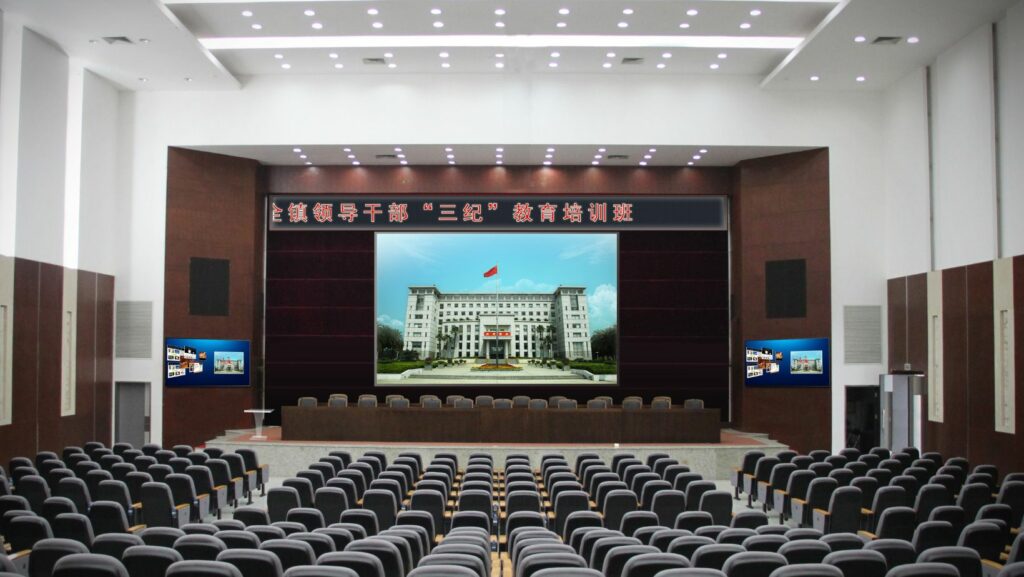In the digital era, the conference room isn’t just a space for meetings; it’s a hub for collaboration and innovation. A key player in this transformation is audio-visual equipment. From enhancing communication clarity to facilitating interactive presentations, these tools are revolutionizing the way businesses operate.
Conference Room Audio Visual Equipment
 When it comes to elevating collaboration, certain tools come to the forefront. Conference room audio visual equipment, comprising various interconnected devices, not only enhances communication but also aids in efficient decision-making. In this chain of tools, the audio equipment, such as microphones, speakers, and audio mixers, ensures clear, crisp sound, eliminating interruptions due to audio glitches. Visual equipment, commonly projectors and interactive displays, provides a platform to visually engage participants, thereby enhancing idea sharing. Connectivity equipment, such as cables, connectors, and wireless solutions, integrate various devices, allowing seamless data and media transfer. Indispensable, too, are control systems that govern all these components, enabling smooth operation. Recognizing the utility and compatibility of these tools points the way towards creating an efficient, modern conference room.
When it comes to elevating collaboration, certain tools come to the forefront. Conference room audio visual equipment, comprising various interconnected devices, not only enhances communication but also aids in efficient decision-making. In this chain of tools, the audio equipment, such as microphones, speakers, and audio mixers, ensures clear, crisp sound, eliminating interruptions due to audio glitches. Visual equipment, commonly projectors and interactive displays, provides a platform to visually engage participants, thereby enhancing idea sharing. Connectivity equipment, such as cables, connectors, and wireless solutions, integrate various devices, allowing seamless data and media transfer. Indispensable, too, are control systems that govern all these components, enabling smooth operation. Recognizing the utility and compatibility of these tools points the way towards creating an efficient, modern conference room.
Types of Conference Room AV Equipment
 The choice of conference room AV equipment largely depends on the specific needs of a business. Following the previous exploration of key components, it’s essential to understand that this equipment falls into three broad categories: Audio Systems, Visual Systems, and Control Systems.
The choice of conference room AV equipment largely depends on the specific needs of a business. Following the previous exploration of key components, it’s essential to understand that this equipment falls into three broad categories: Audio Systems, Visual Systems, and Control Systems.
Audio systems typically incorporate microphones with different pickup patterns for clear sound capture. These include table-top microphones, gooseneck types, or wireless handhelds, each suitable for specific room sizes and meeting styles. Another key audio component, loudspeakers provide clear, intelligible sound crucial for effective communication.
Visual systems primarily consist of projectors or interactive displays used in presentations. Depending on the need, one can choose a simple data projector for static presentations, an interactive projector for dynamic content, or a large LED wall for extensive audience reach.
Control systems serve as the backbone of the AV setup. They primarily include wired or wireless systems that allow attendees to manage and coordinate various AV devices effectively, maintaining a seamless and efficient communication flow.
Key features to look for in Audio Visual Equipment
Choosing optimal conference room audio visual (AV) equipment requires careful consideration of some key features.
 Sound Quality: Audio systems, spanning microphones to loudspeakers, need high sound quality, ensuring the crystal-clear relay of information. For instance, directional microphones capture sound from a specific direction, minimizing ambient noise.
Sound Quality: Audio systems, spanning microphones to loudspeakers, need high sound quality, ensuring the crystal-clear relay of information. For instance, directional microphones capture sound from a specific direction, minimizing ambient noise.- High-definition Display: The quality and size of the visual display have significant roles in communication. Investing in high-definition projectors or LED walls aids in achieving bright, idyllic imagery for presentations or video conferences.
- User-friendly Control System: Given that control systems play a pivotal role in managing AV setup, user-friendliness remains paramount. Systems offering easy-to-navigate interfaces and straightforward programming streamline operation, for example, touch panel control systems.
- Reliable Connectivity: Seamless data transfer is facilitated by reliable connectivity solutions. Devices supporting high-speed cables like HDMI or modern wireless technologies like Bluetooth or Wi-Fi establish robust connections.
- Compatibility: Components’ compatibility assures coherent integration of all parts of the AV system. For instance, a control system that is compatible with various makes and models of audio and video devices eases up gradation and reduces redundancy.
Role of AV Equipment in Effective Communication
Conference rooms have evolved into hubs of collaboration and innovation, largely propelled by the advent of sophisticated audio-visual (AV) equipment. The right AV tools don’t just enhance communication and productivity; they’re the linchpin in streamlining decision-making processes. Whether you’re upgrading an existing setup or starting from scratch, choosing the right AV equipment can elevate your business operations to new heights.
Interconnected devices, including audio equipment like microphones and speakers, visual tools such as projectors and interactive displays, and connectivity solutions, are essential in facilitating efficient communication and decision-making. Control systems are the unsung heroes, managing these components effectively and underscoring the importance of utility and compatibility in a modern conference room setup.

